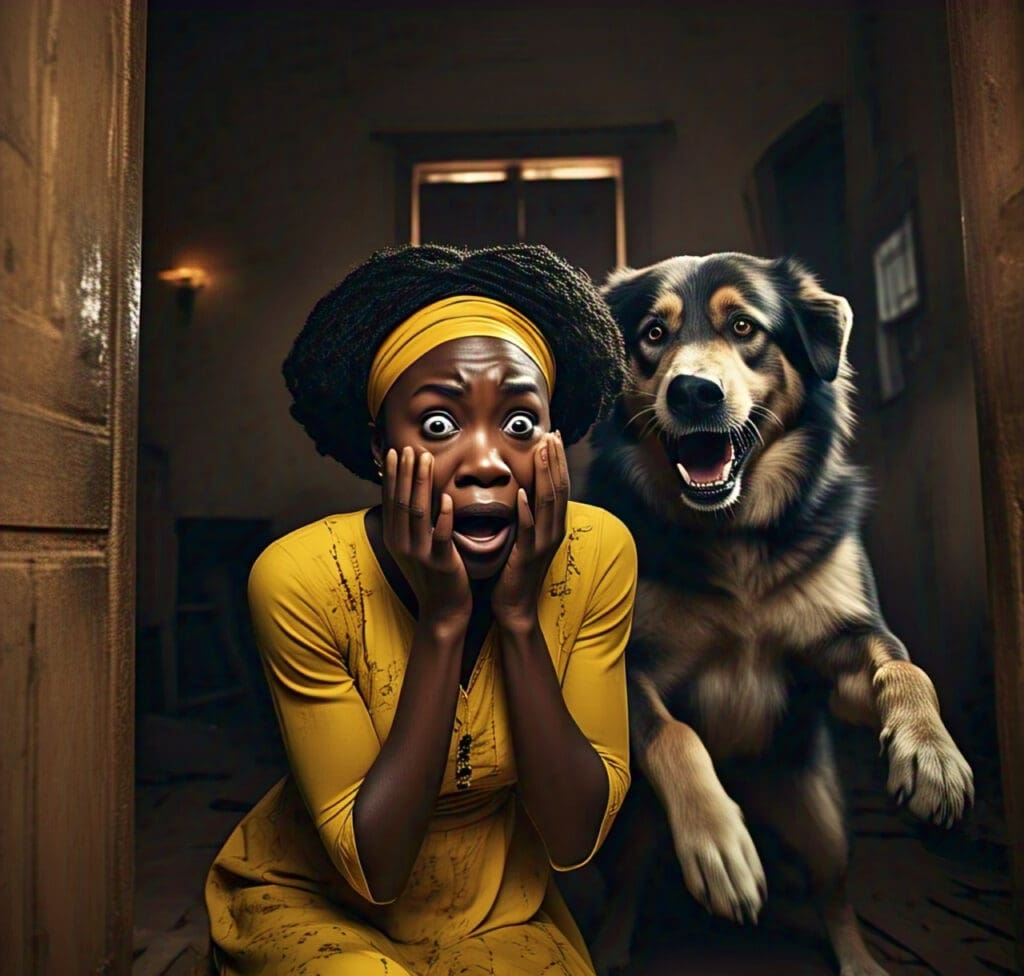
Imagine a fear that’s so strong it makes you feel really, really scared, even when there’s no real danger. That’s kind of what a phobia is. It’s more than just being a little worried or nervous; it’s an intense and often unreasonable fear of a specific thing, situation, or animal. Phobias can make people go out of their way to avoid what they’re scared of, and it can really mess with their daily lives.
What is Phobia?
Phobia is a strong and unreasonable fear of something. It could be fear of a place, situation, object, or even an idea. People with phobias feel very anxious or scared, even when the thing they fear isn’t dangerous.
Phobia is more than just feeling nervous. It can affect daily life, make people avoid certain places or things, and cause distress.
What Causes Phobias?
Phobias don’t just appear for no reason. They often start from past experiences, how we were raised, or the way our brain works. Below are the main causes of phobias explained in a simple way:
1. Bad or Traumatic Experiences
A phobia may start after a scary or painful event. For example:
- A person who was once bitten by a dog may develop cynophobia (fear of dogs).
- Falling from a height can lead to acrophobia (fear of heights).
These memories stick and cause fear whenever the person is near similar situations.
2. Learned Behavior from Parents or Others
Sometimes, children pick up phobias from parents or close adults.
- If a parent is scared of flying, a child might also develop aerophobia (fear of flying).
- Hearing scary stories or watching others panic can make someone afraid too.
3. Genetics and Family History
Phobias can run in families.
- If a parent or sibling has an anxiety disorder or a phobia, it may increase the chance of others in the family developing one too.
- This is partly due to genetics and partly due to learned behaviors.
4. Brain Function and Chemicals
Some people’s brains react more strongly to fear.
- The part of the brain that deals with fear (called the amygdala) may be more active.
- An imbalance in brain chemicals, like serotonin, can also make someone more anxious and likely to develop a phobia.
5. Childhood Fears That Never Go Away
Many kids have common fears, like fear of the dark or monsters.
- If these fears are not managed well, they may continue into adulthood and become phobias like nyctophobia (fear of the dark).
6. Long-term Stress and Anxiety
Stress makes the brain feel like it’s always in danger.
- A person under a lot of stress might start fearing harmless things.
- This can grow into a phobia if not treated early.
7. Media Influence
Scary movies, news, or social media can create fear.
- Seeing repeated stories of plane crashes, for example, can lead to aerophobia.
- Watching horror movies with spiders can cause arachnophobia (fear of spiders).
8. Lack of Exposure to Certain Situations
When someone avoids certain things for too long, fear can grow.
- If you never go near water, over time you might develop aquaphobia (fear of water).
- Lack of real experience can let the mind imagine the worst.
9. Personality Type
People who are naturally more sensitive, shy, or anxious may be more likely to have phobias.
- They may overthink danger or worry more than others.
- These feelings can turn into fears if not managed well.
10. Medical Conditions or Health Scares
A serious health scare can cause someone to fear illness or death.
- Someone who once got very sick might develop nosophobia (fear of getting sick) or emetophobia (fear of vomiting).
- Hospital experiences may lead to a fear of needles or blood.
20 Common Phobias

People with cynophobia may experience anxiety or avoidance behaviors when encountering dogs, even if they appear friendly.
Here are 20 common phobias, along with what might happen when someone faces their fear and some ideas on how they might start to feel less scared:
- Arachnophobia (Fear of Spiders):
- Symptoms: Sweaty palms, fast heartbeat, feeling like you can’t breathe, wanting to run away.
- Overcoming it: Looking at pictures of spiders, learning about them, maybe even being near a spider in a safe container with someone you trust.
- Ophidiophobia (Fear of Snakes):
- Symptoms: Panic attacks, shaking, crying, feeling frozen.
- Overcoming it: Similar to spider fear, starting with pictures and videos, then maybe seeing a snake from a distance in a controlled environment.
- Acrophobia (Fear of Heights):
- Symptoms: Dizziness, feeling unsteady, fear of falling, avoiding high places.
- Overcoming it: Gradually going to slightly higher places, like a small step stool, then maybe a balcony, always with support and feeling safe.
- Agoraphobia (Fear of Open or Crowded Spaces):
- Symptoms: Feeling trapped, anxious in public, avoiding crowds or being alone outside.
- Overcoming it: Starting with short trips to less crowded places with a trusted person, slowly increasing the time and space.
- Cynophobia (Fear of Dogs):
- Symptoms: Intense fear when seeing or hearing dogs, trying to avoid them at all costs.
- Overcoming it: Learning about dog behavior, watching calm dogs from a distance, maybe interacting with a very gentle dog with its owner present.
- Astraphobia (Fear of Thunder and Lightning):
- Symptoms: Hiding during storms, feeling very anxious when it’s dark or cloudy.
- Overcoming it: Learning about weather patterns, finding safe and comfortable places during storms, using relaxation techniques.
- Trypophobia (Fear of Clusters of Small Holes or Bumps):
- Symptoms: Feeling disgusted, itchy, or panicky when seeing things like honeycomb or seed pods.
- Overcoming it: Gently exposing yourself to images for short periods, focusing on your breathing.
- Social Anxiety Disorder (Social Phobia) (Fear of Social Situations):
- Symptoms: Fear of being judged, avoiding social events, feeling very nervous when talking to people.
- Overcoming it: Starting with small social interactions with people you trust, practicing conversations, and challenging negative thoughts.
- Claustrophobia (Fear of Enclosed Spaces):
- Symptoms: Feeling trapped in small spaces like elevators or crowded rooms, sweating, feeling like you can’t breathe.
- Overcoming it: Spending short amounts of time in slightly smaller spaces while feeling safe, using relaxation methods.
- Aerophobia (Fear of Flying):
- Symptoms: Anxiety before and during flights, panic attacks, avoiding air travel.
- Overcoming it: Learning about how planes work and safety procedures, using relaxation techniques during flights, and potentially gradual exposure like visiting an airport.
- Glossophobia (Fear of Public Speaking):
- Symptoms: Dry mouth, shaking, forgetting words, fear of embarrassment.
- Overcoming it: Practice with friends, prepare speeches well, join speaking groups.
- Atychiphobia (Fear of Failure):
- Symptoms: Avoiding challenges, feeling very upset by mistakes, not trying new things.
- Overcoming it: Reframing failure as a learning opportunity, setting realistic goals, and celebrating small achievements.
- Nyctophobia (Fear of the Dark):
- Symptoms: Feeling scared when it’s dark, trouble sleeping, needing a light on.
- Overcoming it: Gradually spending short periods in dim light, using nightlights, and practicing relaxation before bed.
- Hemophobia (Fear of Blood or Injury):
- Symptoms: Fainting or feeling very dizzy at the sight of blood or injuries.
- Overcoming it: Gradual exposure to images or videos of blood/injuries in a controlled setting, learning coping techniques for feeling faint.
- Aquaphobia (Fear of Water):
- Symptoms: Fear of swimming, being near large bodies of water, or even getting splashed.
- Overcoming it: Starting with small amounts of water, like washing hands, then maybe putting feet in a pool, always feeling safe and in control.
- Thanatophobia (Fear of Death):
- Symptoms: Constant worry about dying or the death of loved ones, anxiety about the future.
- Overcoming it: Therapy to explore these fears and develop coping mechanisms, focusing on the present.
- Entomophobia (Fear of Insects):
- Symptoms: Intense fear and avoidance of insects, even small ones.
- Overcoming it: Learning about insects, looking at pictures, maybe observing them from a distance in a safe environment.
- Trypanophobia (Fear of Needles or Injections ):
- Symptoms: Extreme anxiety before or during injections, avoiding medical procedures.
- Overcoming it: Using distraction techniques during injections, communicating fears to healthcare providers, and possibly gradual exposure.
- Automatonophobia (Fear of Human-like Figures):
- Symptoms: Fear of mannequins, dolls, or animatronics.
- Overcoming it: Gently exposing yourself to these figures from a distance, understanding they are not real.
- Nosophobia – Fear of Getting a Disease
- Symptoms:Obsessive health checks, avoiding people, high anxiety.
- Overcoming it: Learn about illness risks, reduce checking habits, therapy.
Overcoming phobias often involve a process called exposure therapy, where you gradually face your fears in a safe and controlled way. It’s usually best to do this with the help of a therapist who specializes in anxiety disorders. They can provide support and guidance to help you feel less afraid over time. Remember, it’s possible to manage and even overcome phobias!
Final Thoughts
Phobias are real and can affect a person’s life deeply. But the good news is, they can be managed and even overcome with the right help.
Tips to deal with phobias:
- Face your fears slowly.
- Practice deep breathing.
- Talk to a mental health professional.
- Use positive self-talk.
- Join support groups.



